New 3rd-party test results on SHT show over 1000x overunity
Solar Hydrogen Trends just got their third set of third-party
test results on their hydrogen-production from water technology. A
world-class engineering firm measured 97% hydrogen output (from H2O
input), and much more than 2800 liters per minute output from 414 watts
input, making this perhaps the most promising technology on the planet.
by
Sterling D. Allan
Pure Energy Systems News
Well, they did it -- more than did it -- making them perhaps the most
promising energy technology company on the planet.
Hakop Aganyan (Jack) of
Solar Hydrogen Trends, Inc (SHT) in Pasadena, California, USA told
me they had another third party test done of their hydrogen-generating
technology by one of the top 20 or 30 engineering firms in the world,
who does testing for billion-dollar corporations. That firm has more
than 100 engineers just in their gas-flow measurement division, he said.
"They build power plants and bridges."
This was an improved variation of SHT's "Symphony 7", with some tweaking
done to further optimize it by one of their Ph.D. scientists, so they
were able to produce even more hydrogen gas with even less power input.
With just 450 watts input, they were producing hydrogen gas at a
rate of "much more than 100 ACFPM" (actual cubic feet per minute,
which is over 2800 liters per minute). SHT expects that with some
additional fine-tuning that they can reduce the input by another 50% to
get the same output.
They shot a video of the gas escaping from the 1/2-inch pipe opening.
"It was whistling", Jack said. The test ran for about 1.5 hours. The
testing group, who sent three engineers, was instructed to follow the
EPA guidelines and protocols for such testing. "We can run it quite a
bit longer than that -- several hours. We're working on improving it to
be able to run 12-24 hours."
Jack had called me a few days ago, before the third party engineering
firm had tabulated the flow rate, to report that the qualitative
analysis came to 97% hydrogen. He said that four canisters of gas were
collected to send two each to two different independent qualitative
analysis labs, whose results were within 0.5% of each other.
Bear in mind that the starting product is water: H20, and 97%
of the output is Hydrogen. So, apparently, the oxygen is somehow being
transmuted into hydrogen in their "symphony" of 16 different functions
happening simultaneously (none of which have anything to do with "solar"
in the classical sense). This implies that some kind of clean nuclear or
similar phenomenon is in play. We're talking new physics.
Jack told me today: "Our oxygen content with the last test result are
two times lower. What this means is that synthesis of atoms of hydrogen
from atoms of oxygen are more active. This confirms that we have a
manageable low energy nuclear reaction."
Last night, when he called me, Jack said that the results were so
phenomenal, that his team decided not to publish them because people
wouldn't believe them. "It is more than 1000 times overunity!" he said.
(Put another way, that's over 100,000% efficient.) But they will allow
qualified entities to view the results under NDA (non-disclosure
agreement), starting with the investment groups that have already been
in contact with them. And he said I could fly in and see the test
results and the videos that were taken.
He pointed out that it was, after all, because of my skepticism about
the previous AirKinetics test results showing as much as 577x overunity
(story),
that spurred them to do this additional third party test to further
validate their claim, he said. When I saw the unit demonstrated in May,
I couldn't hear any sound from the 1/2" opening, and so I was doubtful
that they were anywhere near 1000 liters per minute. My rough
calculations based on the anemometer that was the only flow rate tool
available, was that they might be 10x overunity, which is still
phenomenal. (Story)
Konstantin, the inventor, thinks they deserve to be back in #1 position
in our Top 5 Exotic Free Energy
Technologies listing. I'm torn, because they're a year from market, and
the present #1, Hydroxy technologies, has been in the market for years,
and is presently making a significant difference. However, hydroxy pales
in comparison to the degree of difference SHT can make once they are in
the market.
One of the iterations Konstantin foresees for their technology is to go
straight to electricity, without the hydrogen step. I don't fully
understand the physics of that, but I have a glimmer, and don't think
he's being outlandish to say that.
Jack pointed out that "You only need to run this for a few hours to
produce enough hydrogen to power your house for a week."
A primary consideration for Top 5 ranking is nearness to making a
difference in the market, not just potential to do so.
What do you think? Should I put them back in the #1 spot? I think they
at least deserve to be in second place, even though they are a year from
market.
Poll:
Speaking of polls, in my report about the May 16 demo, we ran a
poll of our
readers. Here are the
results of that
poll. (Please don't vote in the poll, since this new information
will skew the outcome. I don't see a way to turn off the SurveyMonkey
polling to freeze it at it's present status.) I reference this because I
want you to see how off most of us were, including me. We greatly
underestimated this technology and team.
Jack jokingly reminded me that they won our
wager, so I owe them to pay for the third party testing and the
expense of my trip to go see it. They are so happy with the results,
that they're not of a mind to hold me to the wager, which was made in
jest anyway. The reason I was confident making the wager was that I was
sure that if they indeed were able to "measure 1300 L/m or greater, with
an input of 510 Watts" that I wouldn't have a hard time finding people
willing to cover that. And true to that, as I spoke with one of the
people who I've brought to the SHT table for negotiations, he was very
thrilled.
As I was telling my parents about these test results, my
dad pointed out that "It's like the
miracle of the loaves and fishes, where a few loaves and fishes --
enough to feed five -- was somehow transformed to feed 5,000 people in
one setting, and 3,000 in another. That's 1000x overunity." I've been
helping my dad with a book he's preparing for publication: "It's About
Time," with subtitle to the effect, "Harmonizing Science and Religion."
On our bike ride this morning, he said he's going to add a statement in
his book about how free energy is all about freedom, and when we stop
deserving tyranny because of the corruption we've sewn as a society, and
finally turn to God, then we'll finally deserve free energy and will
receive it as a society. This analogy to the loaves and fishes brings
this concept full circle, showing that God is preparing a better future
for us. All we need to do is turn to God and live.
Meanwhile, since our present world isn't so friendly to such
game-changing energy technologies that will obsolete just about
everything else, the SHT team advised Jack to dismantle the Symphony 7
prototype and store it elsewhere, for safety.
They hope to have two more units built within the next two months.
Last night, Jack said, "This is the new Declaration of Independence,"
pointing out that Thomas Jefferson wrote the document on July 2, which
is when SHT got the third party test results. His team sees the
potential this technology has to liberate humanity and bring "power to
the people", literally and figuratively, empowering mankind. Ironically,
most of their team comes from Russian-root descent. One of them got
their doctorate in the Ukraine. When I went to the SHT demo in Pasadena
in May, the first guy I met from their team, Kirill Gichunts, had flown
in from the Ukraine for that demo.
Jack mentioned that their team was reviewing a blog post I made
yesterday:
- Resurrecting Oleg Gritskevich's Hydromagnetic Dynamo - Out of Russia, 22 years BEFORE Fleischmann and Pons, the 1st cold fusion device prototype was constructed.... (Free Energy Blog; July 2, 2014)
It turns out that several in their team actually worked with some of
the projects and people mentioned in that story. Konstantin was good
friends with Oleg. Out of that project, in 1984, came the first
photolysis in Armenia.
Speaking of underestimating, one of the comments people have posted is
that when they do a search for Konstantine Balakiryan in Google, they
don't find hardly anything, implying that they conclude from this
omission that he must be some kind of charletain. What they forget is
that they need to translate his name into Russian, then they will get a
wealth of information.
To give you an idea, here is a brief synopsis:
Konstantine Balakiryan's Credentials
|
Contact
Contact them directly by email:
info@solarhydrogentrends.com
- - - -
We're still getting by on
donations, so your chipping in is what is keeping us going as a news
organization.
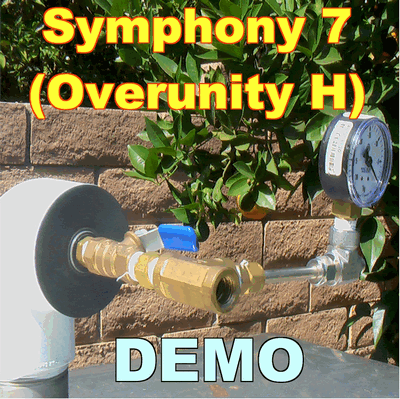
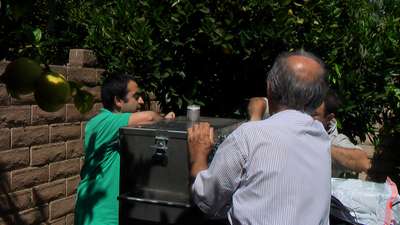
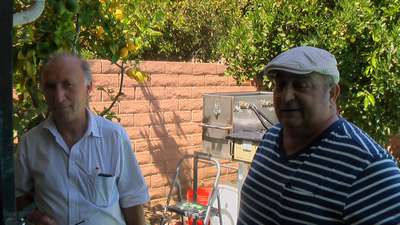
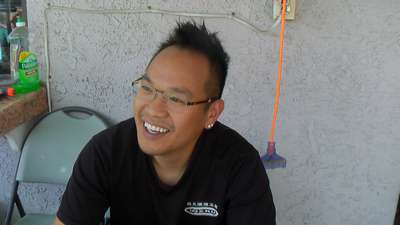
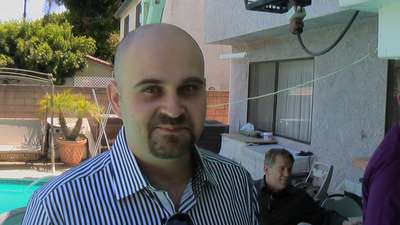
 Prior
to his pioneering work stateside, Konstantin served for nearly
three decades (beginning in 1971) as professor and head of
the Natural Sciences Department (physics, chemistry and
mathematics) at the Russian University of Friendship in Moscow,
which was the second largest university in the Soviet Union.
Between 1979 and 1987 of those years, he worked as vice-rector,
Chief Educational Department.
Prior
to his pioneering work stateside, Konstantin served for nearly
three decades (beginning in 1971) as professor and head of
the Natural Sciences Department (physics, chemistry and
mathematics) at the Russian University of Friendship in Moscow,
which was the second largest university in the Soviet Union.
Between 1979 and 1987 of those years, he worked as vice-rector,
Chief Educational Department.